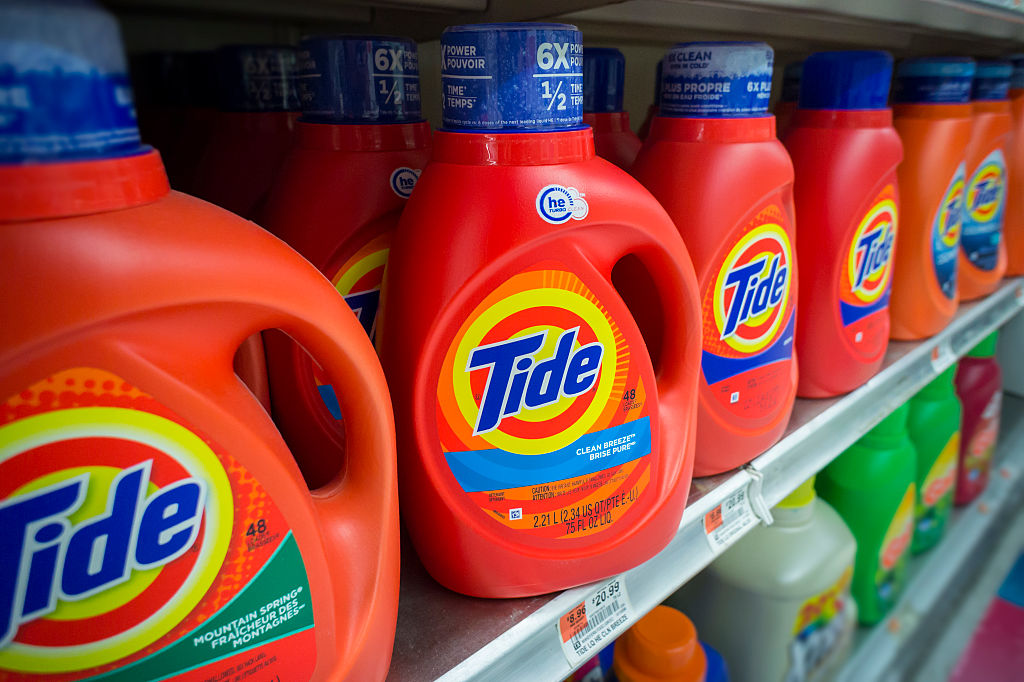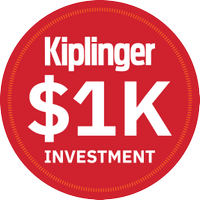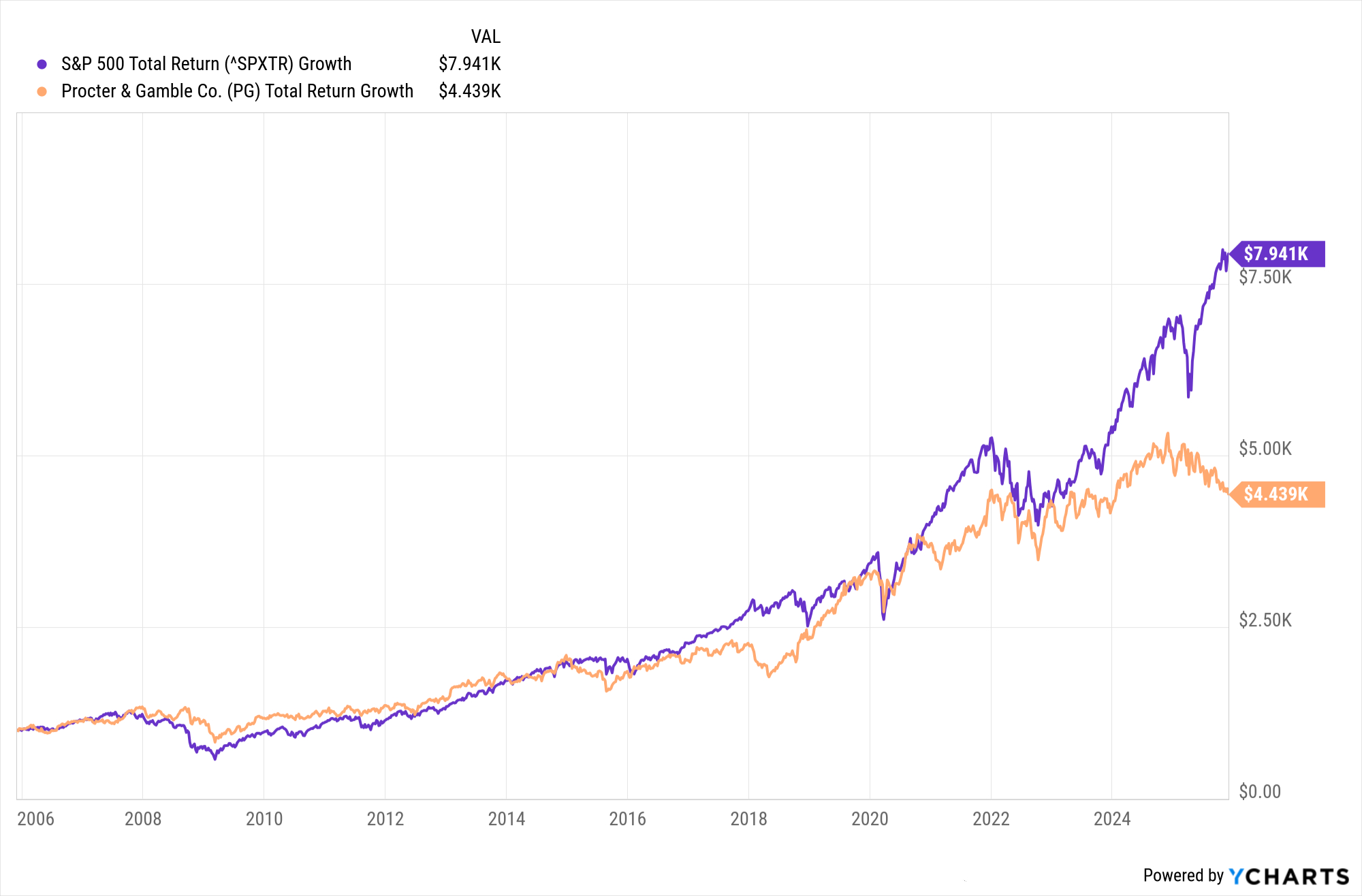If You'd Put $1,000 Into Procter & Gamble Stock 20 Years Ago, Here's What You'd Have Today
Procter & Gamble stock is a dependable dividend grower, but a disappointing long-term holding.



Procter & Gamble (PG) is about as blue as a blue chip stock can be. Sadly for long-term shareholders, this battleship of a defensive dividend-paying name has delivered underwhelming returns vs the broader market for a very long time.
Founded in the first half of the 19th century, P&G has grown into the world's largest consumer products company by market value, boasting a vast portfolio of billion-dollar brands. From Tide laundry detergent to Crest toothpaste to Pampers diapers, today, P&G sells its wares in more than 150 countries.
Yet even as Procter & Gamble expanded its dominance in the U.S. and spread around the globe, it never wavered in its commitment to returning cash to shareholders through dividends. P&G has paid uninterrupted dividends since 1891.
From just $107.88 $24.99 for Kiplinger Personal Finance
Become a smarter, better informed investor. Subscribe from just $107.88 $24.99, plus get up to 4 Special Issues

Sign up for Kiplinger’s Free Newsletters
Profit and prosper with the best of expert advice on investing, taxes, retirement, personal finance and more - straight to your e-mail.
Profit and prosper with the best of expert advice - straight to your e-mail.
Even more impressively, P&G has increased its payout every year for nearly seven decades. As a member of the S&P 500 Dividend Aristocrats, Procter & Gamble has more than earned its reputation as one of the best dividend stocks to buy for dependable dividend growth.
Between its dividend increases and the fundamental nature of its business — sales of toothpaste and diapers tend to hold up in tough times — P&G stock is considered a classic defensive name.
This Buy-rated Dow Jones stock has been a component of the blue-chip benchmark since 1932.
There's no questioning the company's illustrious history. P&G stock's past performance, however, isn't quite as distinguished.
The bottom line on PG stock?

There's no way around it: P&G stock has been a market laggard for ages.
To be fair, over its lifetime as a publicly traded company, P&G has delivered market-matching results. With a total return (price change plus dividends) of 10.8%, it's essentially tied with the S&P 500 over the same span.
The problem is that if you look at time frames more relevant to shareholders alive today, Procter & Gamble stock is a bust.
It lags the broader market on an annualized total return basis in the past one-, three-, five-, 10-, 15- and 20-year periods – and by painfully wide margins, too.
To get a sense of what this underperformance looks like on a brokerage statement, have a look at the above chart. It shows that if you put $1,000 into P&G stock 20 years ago, it would today be worth about $4,400. That's an annualized return of 7.8%.
The same thousand bucks invested in the S&P 500 would today be worth about $8,000 — or an annualized return of 10.9%.
Past performance is not a guarantee of future results, and Wall Street does mostly like P&G stock at current levels. Of the 24 analysts covering P&G surveyed by S&P Global Market Intelligence, 10 call it a Strong Buy, four rate it at Buy and 10 say Hold. That works out to a consensus recommendation of Buy — albeit with somewhat mixed conviction.
Speaking for the bulls, Argus Research analyst Taylor Conrad recommends buying shares on weakness.
"Despite higher raw material and distribution costs, the company continues to manage its margins with productivity initiatives," Conrad writes in a note to clients. "We also like P&G’s record of dividend growth and note that management’s 5% dividend hike in April showed confidence in future performance."
More Stocks of the Past 20 Years
- If You'd Put $1,000 Into Home Depot Stock 20 Years Ago, Here's What You'd Have Today
- If You'd Put $1,000 Into Coca-Cola Stock 20 Years Ago, Here's What You'd Have Today
- If You'd Put $1,000 Into Sherwin-Williams Stock 20 Years Ago, Here's What You'd Have Today
Profit and prosper with the best of Kiplinger's advice on investing, taxes, retirement, personal finance and much more. Delivered daily. Enter your email in the box and click Sign Me Up.

Dan Burrows is Kiplinger's senior investing writer, having joined the publication full time in 2016.
A long-time financial journalist, Dan is a veteran of MarketWatch, CBS MoneyWatch, SmartMoney, InvestorPlace, DailyFinance and other tier 1 national publications. He has written for The Wall Street Journal, Bloomberg and Consumer Reports and his stories have appeared in the New York Daily News, the San Jose Mercury News and Investor's Business Daily, among many other outlets. As a senior writer at AOL's DailyFinance, Dan reported market news from the floor of the New York Stock Exchange.
Once upon a time – before his days as a financial reporter and assistant financial editor at legendary fashion trade paper Women's Wear Daily – Dan worked for Spy magazine, scribbled away at Time Inc. and contributed to Maxim magazine back when lad mags were a thing. He's also written for Esquire magazine's Dubious Achievements Awards.
In his current role at Kiplinger, Dan writes about markets and macroeconomics.
Dan holds a bachelor's degree from Oberlin College and a master's degree from Columbia University.
Disclosure: Dan does not trade individual stocks or securities. He is eternally long the U.S equity market, primarily through tax-advantaged accounts.
-
 Stocks Struggle for Gains to Start 2026: Stock Market Today
Stocks Struggle for Gains to Start 2026: Stock Market TodayIt's not quite the end of the world as we know it, but Warren Buffett is no longer the CEO of Berkshire Hathaway.
-
 Tip: Ways to Track Your Credit Card Rewards
Tip: Ways to Track Your Credit Card RewardsHere are the best strategies and apps to help you stay current with your credit card rewards.
-
 How New Investors Can Pick Their Perfect Portfolio, According to a Pro
How New Investors Can Pick Their Perfect Portfolio, According to a ProSee what Cullen Roche has to say about finding your perfect portfolio as a new investor and his two-word answer on where he thinks the stock market is headed in 2026.
-
 Stocks Struggle for Gains to Start 2026: Stock Market Today
Stocks Struggle for Gains to Start 2026: Stock Market TodayIt's not quite the end of the world as we know it, but Warren Buffett is no longer the CEO of Berkshire Hathaway.
-
 How New Investors Can Pick Their Perfect Portfolio, According to a Pro
How New Investors Can Pick Their Perfect Portfolio, According to a ProSee what Cullen Roche has to say about finding your perfect portfolio as a new investor and his two-word answer on where he thinks the stock market is headed in 2026.
-
 High-Net-Worth Retirees: Don't Overlook These Benefits of Social Security
High-Net-Worth Retirees: Don't Overlook These Benefits of Social SecurityWealthy retirees often overlook Social Security. But timed properly, it can drive tax efficiency, keep Medicare costs in check and strengthen your legacy.
-
 Do You Have an Insurance Coverage Gap for Your Valuables? You May Be Surprised to Learn You Do
Do You Have an Insurance Coverage Gap for Your Valuables? You May Be Surprised to Learn You DoStandard homeowners insurance usually has strict limits on high-value items, so you should formally "schedule" these valuable possessions with your insurer.
-
 If You'd Put $1,000 Into Lowe's Stock 20 Years Ago, Here's What You'd Have Today
If You'd Put $1,000 Into Lowe's Stock 20 Years Ago, Here's What You'd Have TodayLowe's stock has delivered disappointing returns recently, but it's been a great holding for truly patient investors.
-
 Don't Trade After-Hours Without Reading This
Don't Trade After-Hours Without Reading ThisAre you a night owl or an early bird with a yen for active trading? Before you transact after-hours, consider these tips and potential traps.
-
 8 Practical Ways to Declutter Your Life in 2026: A Retirement 'Non-Resolution' Checklist
8 Practical Ways to Declutter Your Life in 2026: A Retirement 'Non-Resolution' ChecklistHere's how to stop wasting your energy on things that don't enhance your new chapter and focus on the things that do.
-
 To Retire Rich, Stop Chasing Huge Returns and Do This Instead, Courtesy of a Financial Planner
To Retire Rich, Stop Chasing Huge Returns and Do This Instead, Courtesy of a Financial PlannerSaving a large percentage of your income, minimizing taxes and keeping spending in check can offer a more realistic path to retiring rich.